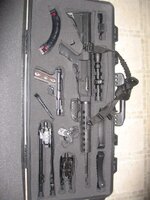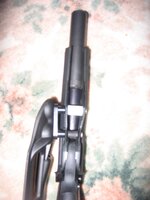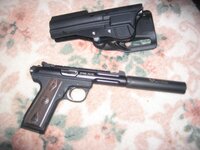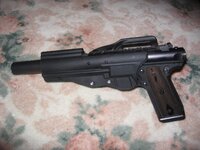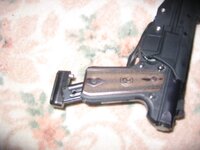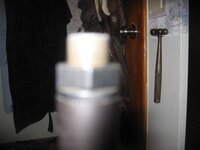- Messages
- 30
- Reactions
- 10
I just got my SS Sparrow (9 month wait on my paperwork approval but it was worth it). My question is, how do I clean my stainless steel can by hand? I plan on soaking in a solution of 50/50 white vinegar and hydrogen peroxide, scrubbing with bronze and/or nylon brushes and use 22 cal bore brush for tight places. Once cleaned, I will coat insides with TC Bore Butter. For the following cleanings I will soak in non-chlorinated break cleaner to remove bore butter then I will soak in white vinegar/hydrogen peroxide solution and scrub to clean lead (wearing gloves). Once cleaned and dry, I will reapply the bore butter and go back to shooting.
I know enough to be dangerous and really do not intend on buying fancy (expensive) cleaning equipment. So, I would really appreciate some "Proven" methods of cleaning my can by hand (keep it clean ha ha). Any advise on tools, solutions, time of soaking, methods, ect.......
I am placing my SS Sparrow on a Ruger 22/45 MKIII Lite and on my Ruger SR-22 rifle. I picked up my Sparrow and found a legal and safe place to put 10 rounds thru it on my 22/45. FRP was noticable but it got quieter on the following 9 rounds. What do you do to get the best results from your SS Sparrow?
Tks, bob
I know enough to be dangerous and really do not intend on buying fancy (expensive) cleaning equipment. So, I would really appreciate some "Proven" methods of cleaning my can by hand (keep it clean ha ha). Any advise on tools, solutions, time of soaking, methods, ect.......
I am placing my SS Sparrow on a Ruger 22/45 MKIII Lite and on my Ruger SR-22 rifle. I picked up my Sparrow and found a legal and safe place to put 10 rounds thru it on my 22/45. FRP was noticable but it got quieter on the following 9 rounds. What do you do to get the best results from your SS Sparrow?
Tks, bob






